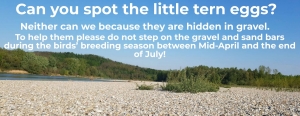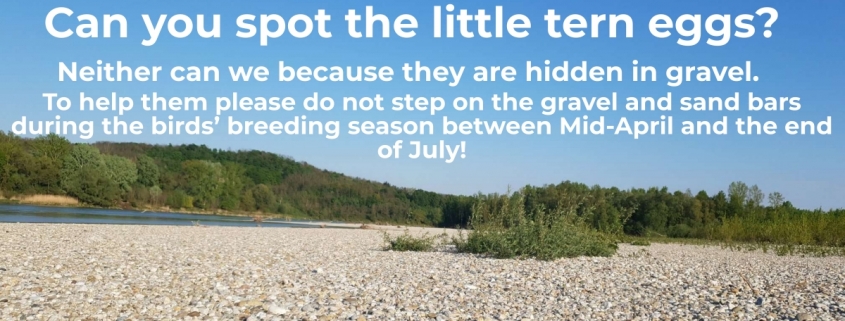This strictly protected species is threatened by river regulation and hydropower plants, gravel and sand extraction, and human disturbances such as rowing, fishing, swimming, and similar activities. The presence of the Little Tern is an indicator of dynamic parts of the river flow with sandy and gravel banks, steep shores, and backwaters that are also home to other endangered river bird species dependent on dynamic habitats, such as the Sand Martin, Kingfisher, Bee-eater, and others. Therefore, the Little Tern has become a symbol of the Drava River and the Mura-Drava-Danube Five-country Biosphere Reserve. Unlike the Common Tern, the Little Tern refuses to nest on artificial platforms and is exclusively tied to the natural river.

To preserve the last breeding pairs of the Little Tern, it is necessary to restore the river’s dynamics and allow the Drava to create new gravel and sandy banks, as well as prevent disturbances to the birds during the nesting season. This is one of the main goals of the DRAVA LIFE project.
Participants received information on responsible practices to minimize disturbances to these protected bird species during the crucial breeding period, emphasizing the need to avoid using gravel banks from April to July to increase the population and ensure these birds become common neighbors on the Drava River again. Željka Kolar, director of the Public Institution, highlighted the importance of protecting the Drava River and provided an overview of the protected areas and species found within the County, emphasizing the Mura-Drava Regional Park, which is part of the Natura 2000 area important for the conservation of birds, species, and habitat types, and part of the Mura-Drava-Danube Five-Country Biosphere Reserve.
“Workshops like this serve as key tools in fostering shared responsibility for the protection of the unique ecosystems of the Drava River and ensuring the continuous well-being of its diverse plant and animal life,” said Ms. Kolar. “This initiative represents a step towards nature conservation and creating harmony between humans and wildlife, inviting everyone to join in protecting the unique habitats and species of our environment.”






